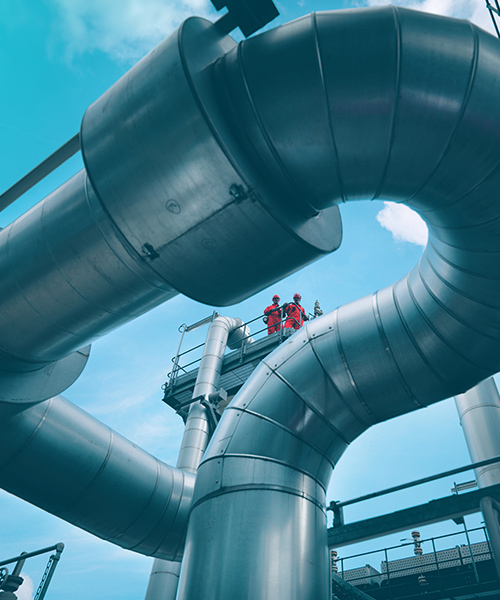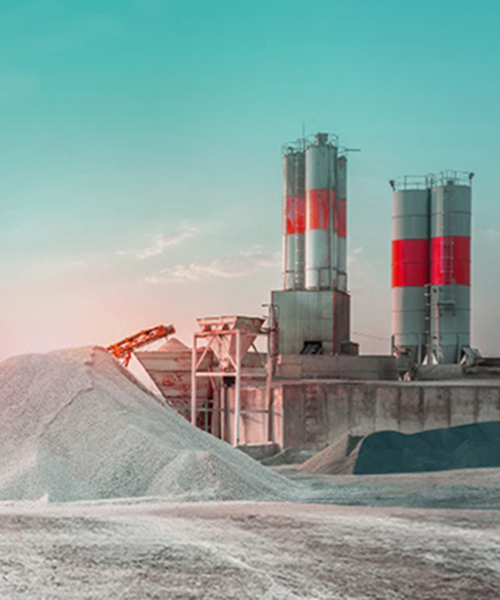November 11, 2024 • 4 min read
Carbon capture: the crucial success factors for an emerging industry
According to the Global CCS Institute, there are nearly 580 carbon capture and storage (CCS) projects underway worldwide, ranging from feasibility studies to full-scale implementation. And by 2030, if all projects are realized, these will collectively capture approximately 365 million tons of CO2 per year.
However, this is only a fraction of the carbon capture, utilization and storage (CCUS) infrastructure required to meet global decarbonization targets. So, what practical solutions – that are available today – are available to support the scale-up of CCUS infrastructure worldwide?
CCUS growth and technology-neutral approach
“A technology-neutral approach is critical as the industry matures,” says Gary LeMaire, Senior Director, CCUS. “CCUS is still an emerging field, and it’s vital to remain open to diverse technologies and methodologies.”
A technology neutral approach allows companies to evaluate each technology's strengths and weaknesses in different contexts, and then implement the best solution.
“For example, our team working on VPI Immingham’s combined heat and power plant in the UK performed extensive technology validation to ensure that the equipment met the plant’s specific needs,” LeMaire adds. “This included reviewing vendor proposals, validating specifications, and de-risking the project to account for its industry leading 3.3 million tons per annum of scale.”
Such efforts demonstrate how industry players can methodically address the risks and challenges inherent in CCUS deployment.
Standardization and supply chain challenges
Even with careful project planning, supply chain limitations pose risks to timely CCUS expansion. The current demand for key components, such as compressors and pipelines, are outpacing the ability of technology licensors to innovate and deliver.
“This is where standardization and modularization can keep critical projects moving,” says LeMaire. “These practices have already proven their value in the oil and gas industry by streamlining processes, reducing costs, and improving project timelines.”
Applying similar approaches to CCUS projects enables companies to replicate modules and leverage designs at scale, reducing complexity and costs, and improving efficiency.
“Standardized solutions, while not eliminating the need for expertise, can simplify project delivery as well,” continues LeMaire.
“When developers can rely on a familiar toolbox of pre-tested designs, it becomes easier to manage resources and meet the growing demand for CCUS capabilities.”
Building on established technologies
“One area where oil and gas experience are directly transferable is in the construction of CO2 pipelines,” says LeMaire. “Lessons learned from decades of designing, building, and operating gas pipelines are invaluable to CCUS projects.”
In the US, over 5,000 miles of CO2 pipelines exist and have safely and reliably transported CO2 since 1972. With sophisticated leak detection systems and safety protocols, CCUS developers can ensure the safe transport of captured CO2. This includes mastering flow assurance and phase management, ensuring that pipelines operate efficiently under varying conditions.
Adapting to global geographies
Gary comments that geological factors also influence CCUS projects. Some regions are naturally suited to CO2 storage, while others must transport the captured carbon elsewhere.
For instance, depleted reservoirs in the North Sea, South-East Asia and Australia provide ideal storage for those areas, where existing offshore production infrastructure can be repurposed for injection. Countries like Japan and Korea lack suitable geology for in-country storage and are exploring transportation options to places like Indonesia, Malaysia and Australia. This strategy would require significant investment in shipping and infrastructure.
“The liquefied petroleum gas (LPG) industry can offer valuable insights,” says LeMaire. “LPG’s established processes for transporting pressurized refrigerated liquids over long distances can inform how CO2 might be shipped for storage. In addition, the liquefied natural gas (LNG) industry offers synergies as it can be used as a heat sink to liquefy CO2 for transportation.”
There are options to optimize the cost of the CO2 value chain by adjusting the transportation pressure, destination, and carrier size. The type and capacity of storage tanks can also be varied to reduce cost, within land and regulatory constraints.
The role of regulation and global momentum
LeMaire emphasizes that “CCUS expansion also depends heavily on government influence, with recent shifts in policy and regulations. In the US, the Inflation Reduction Act (IRA) and the 45Q tax credits have fueled a significant increase in CCUS projects in development.”
Similarly, Canada’s Refundable Investment Tax Credits and the EU’s Net Zero Industry Act, are expected to drive comparable growth in their locations.
Around the world, momentum is building. Southeast Asia, Australia, and the Middle East are developing CO2 hubs, with major projects like Malaysia’s Kasawari CCS leading the way. Kasawari aims to capture over three million tons of CO2 annually, setting the standard for large-scale offshore CCS efforts.
Collaboration and innovation for a sustainable future
As global CCUS projects ramp up, LeMaire believes collaboration across industries and regions will be crucial.
“Whether integrating lessons from oil and gas or adopting best practices from related industries like LNG, the successful deployment of CCUS at scale depends on shared knowledge and innovation.
“By focusing on technology-neutrality, standardization, and leveraging global expertise, the CCUS sector can accelerate its role in the global decarbonization effort. Ultimately, scaling CCUS is not just a possibility – it’s a necessity for achieving a sustainable, lower carbon future.”






